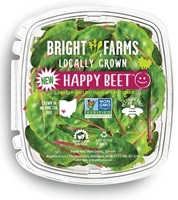
Agriculture Moves Indoors
Will controlled environment growing remake the landscape of modern agriculture? Pioneering indoor growers believe that it’s time for farming to go high tech.
Article Content
At its most idyllic, a traditional farm scene calls to mind the vivid hues of nature. Think rich brown soil and rows of leafy green plants sprouting under a bright blue sky and a radiant, golden sun.
Indoor farming conjures up somewhat different imagery: the slightly eerie, pinkish-purplish glow of LED lighting, metallic-gray shelving units, and sterile white growing trays.
In the bold new world of controlled environment agriculture (CEA) in which crops are grown in enclosed spaces ranging from smart greenhouses to high-tech vertical farms, much more than the color palette of farming has begun to change. Futurists have long theorized about the potential that indoor farms have to help feed a growing global population, but such farming operations have tended to be experimental and relatively small in scope. In just the past couple of years, however, the business of indoor growing has moved closer to viable commercial reality thanks to new sensor technologies, advances in LED lighting, and state-of-the-art climate control systems, not to mention machine learning and advanced data analytics, all of which are coming together to transform growing practices.
But where will these changes lead? What do they mean for the world’s food supply? Is CEA truly scalable? And can the ambitious pioneers who’ve put a stake in the soil-free ground of indoor growing make a go of it?
The appeal of CEA is clear. Growing in a controlled indoor environment is local and sustainable; it requires far less water than outdoor growing, and it doesn’t deplete the soil. Because of their closed systems, many indoor growers use no pesticides. And produce can be bred for garden-fresh taste rather than for the ability to withstand the rigors of a distribution cycle that spans thousands of miles; most indoor growers proudly tout the fact that their products are free of GMOs.
The challenges that CEA presents are equally clear: It’s difficult and expensive. Starting an indoor growing operation is capital intensive, and the labor and energy costs required to operate it are high.
Growers must be vigilant about food safety, and entrepreneurs who come from outside the produce world may underestimate the complexity of building a fresh food supply chain.
The Rising Profile of CEA
Despite the challenges it presents, indoor growing has some high-profile fans and funders. Celebrity chefs Carla Hall and Tom Colicchio invested in Kearny, N.J.–based Bowery Farming, which closed a $90 million funding round in December 2018 with funding from investors who include the CEO of Uber (Zaleski 2018). In July 2017, South San Francisco–based hydroponic grower Plenty secured the largest ag tech investment to date, raising $200 million in a funding round led by a huge Japanese tech fund (Cosgrove 2017). And earlier this year, Cincinnati-based 80 Acres Farms announced a major investment, which AgFunder News (Burwood-Taylor 2019) put at more than $40 million.
“At any given time, it is very difficult to say how many indoor commercial growers exist in the world, as new indoor farms are constantly being launched, and many continue to fail,” says Henry Gordon-Smith, founder and managing director of Brooklyn, N.Y.-based Agritecture Consulting. “The industry is still waiting on data for 2018, but what is clear is that 2017 was a very good year globally for agricultural technologies in which we saw a record $10.1 billion in early-stage investment.”
Indoor growing has grabbed the attention of private equity investors because they see the potential for big wins, says Allison Kopf, who in 2015 founded Brooklyn, N.Y.–based Agrilyst to bring to market a web-based software platform for managing the indoor growing process. “Venture capitalists are really interested in massive, massive market opportunities where you can deploy technology and get a really big outcome,” notes Kopf. “Agriculture traditionally has been a very massive industry that has been underserved by technology.”
The way Kopf sees it, indoor farming is just starting to scale up and growers have a lot of learning left to do, but the opportunity is there for companies that get it right. “I think you’re going to have a lot of companies go under in the next few years, but you’re going to have companies that become really successful,” she predicts.
Farm Models Differ
Thanks to their short growth cycles, leafy greens are ideally suited to indoor growing and represent the bulk of CEA crops. Indoor farmers also are growing microgreens, herbs, tomatoes, and cucumbers, and they are experimenting with additional crops. 80 Acres Farms has strawberries and grapes in the R&D stage, for example. According to an Agrilyst survey conducted in 2017, 80% of the indoor growers polled raise at least two crops thanks to their ability to create microclimates inside their growing facilities.
Among the major CEA players, there’s no single approach to growing. Most companies have developed their own systems over the course of years of R&D and trial and error.
Hydroponics—growing plants in a nutrient-rich, water-based solution—is the method of choice for the largest percentage of indoor farming operations; 49% of the respondents in the Agrilyst survey opt for hydroponics. Aquaponics, which involves raising fish and plants in an integrated system, is used by 15% (Figure 1).
Newark, N.J.–based AeroFarms grows greens using a system called aeroponics in which the roots of plants are misted with water and nutrients rather than immersed as they are in hydroponic growing systems. The company has patented its process, which employs a cloth growing medium made from recycled plastic.
At AeroFarms, which operates one farm in a former steel mill and another in a onetime paintball arena, plants are grown on shelving units stacked 12 levels high. Plenty grows greens on 20-foot vertical towers located so close together that they give the effect of walls of greens. And some companies, particularly those that use a greenhouse model, use low shelving units.
Growers employ sophisticated climate control systems to maintain the perfect balance of air flow, light, water, and humidity in their facilities. In the most advanced operations, hundreds if not thousands of sensors track plant growth. Machine learning and artificial intelligence technologies enable growers to interpret the data their sensors collect and use the information to continually tweak their growing practices, adjusting inputs like water and nutrients with great precision, ensuring that plants get exactly what they need—no more and no less, thus reducing waste at the same time they are ensuring optimal growth.
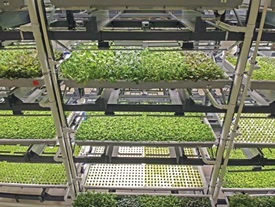 To efficiently manage its operation, the team at Bowery has developed a proprietary software platform, BoweryOS, which uses vision systems, automation technology, and machine learning to monitor plants and “all the variables that drive their growth 24/7,” according to the company. “Now more than ever, we need scalable solutions for an impending climate and food crisis, and we deeply believe in the power of technology to make drastic, necessary improvements to the food system,” says cofounder and CEO Irving Fain.
To efficiently manage its operation, the team at Bowery has developed a proprietary software platform, BoweryOS, which uses vision systems, automation technology, and machine learning to monitor plants and “all the variables that drive their growth 24/7,” according to the company. “Now more than ever, we need scalable solutions for an impending climate and food crisis, and we deeply believe in the power of technology to make drastic, necessary improvements to the food system,” says cofounder and CEO Irving Fain.
When its Hamilton, Ohio, facility now under construction is complete, 80 Acres Farms will have automated growing from seeding to harvesting, the company says.
At San Carlos, Calif.–based Iron Ox, which opened the doors of its robotically powered indoor farm this past fall, a robot named Angus lifts 800-pound containers filled with seedlings and carries them around a 2,000-square-foot growing area. Seedlings are transplanted via a robotic arm (Smith 2018). The company describes its approach as “human led, robotics first” and its produce as “grown by robots with love.”
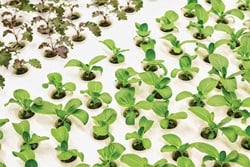 Automating the farming process is a priority for many companies because the cost of labor is one of the biggest challenges that growers face. In the Agrilyst survey, hydroponic growers reported that labor accounted for 49% of their total operating costs, and vertical farmers put it at 56%. The labor shortages that conventional farmers face helped inspire Iron Ox’s robotic systems, company cofounder Brandon Alexander told The Guardian last year (Smith 2018).
Automating the farming process is a priority for many companies because the cost of labor is one of the biggest challenges that growers face. In the Agrilyst survey, hydroponic growers reported that labor accounted for 49% of their total operating costs, and vertical farmers put it at 56%. The labor shortages that conventional farmers face helped inspire Iron Ox’s robotic systems, company cofounder Brandon Alexander told The Guardian last year (Smith 2018).
Operational Challenges
In addition to labor, energy costs are a major contributor to operating expenses, and lighting is typically a big part of that. Unsurprisingly, all the indoor vertical farms Agrilyst surveyed reported using supplemental lighting versus only 43% of greenhouse growers. Indoor vertical farmers reported using lights 16 hours a day on average.
LED lighting has become more efficient and considerably less costly in recent years, but it’s still a significant expense for indoor growers, says Vonnie Estes, vice president of technology with the Produce Marketing Association. “Getting enough power to run all the lights and all the heating that is required right now is so expensive,” she says.
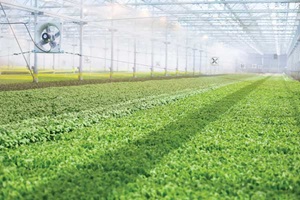 Lighting costs are “a big part of why we use sunlight to grow,” says Abby Prior, vice president of marketing for BrightFarms, a hydroponic grower that uses a greenhouse model for the farms it operates in Ohio, Illinois, Pennsylvania, and Virginia. “We think it is an available and abundant natural resource, and it also enables us to reduce our operating expenses, which enables our farms to be profitable,” she says. “We use as little supplemental energy as we possibly can.”
Lighting costs are “a big part of why we use sunlight to grow,” says Abby Prior, vice president of marketing for BrightFarms, a hydroponic grower that uses a greenhouse model for the farms it operates in Ohio, Illinois, Pennsylvania, and Virginia. “We think it is an available and abundant natural resource, and it also enables us to reduce our operating expenses, which enables our farms to be profitable,” she says. “We use as little supplemental energy as we possibly can.”
Data from Agritecture show that the cost of operating a smart greenhouse that takes advantage of natural sunlight and advanced automation is about one-third that of an indoor vertical farm (Holt 2018).
Confronted with high costs for labor, lighting, and more, it’s not surprising that only 51% of the Agrilyst indoor farming survey respondents reported operating profitably. On average, profitable farms were in operation for seven years versus five years for those that were unprofitable.
Other challenges for indoor farming startups include correctly forecasting demand, establishing and maintaining relationships with retailers, and managing the supply chain. As Estes observes, “Even though the supply chain is shorter because they say they’re going to be next to urban centers, a truck still has to pick it up and take it somewhere to be sold or deliver it to the consumer.”
Establishing relationships with local retailers before building a farm has been key to BrightFarms’ success, according to Prior. “By partnering with just one or two major retailers with each farm, it enables us to be really efficient and it enables us to meet their needs with a year-round, large-scale program that really becomes a meaningful part of their salad category,” she explains. All the produce grown at the company’s Virginia farm goes to stores within the Ahold grocery chain, and in the Chicago area, BrightFarms has partnered with the Mariano’s division of Kroger.
“The salad category is typically the largest category within produce at our supermarket retailers,” says Prior. “So, it’s really strategically important for them.” Typically, the company puts long-term retail supply agreements in place before it builds a new farm.
Safety First
As it is for any food company, food safety is a critical concern for indoor growers, and having systems in place to mitigate the risk of pathogen contamination and facilitate traceability is a must.
“Our growing practices are structurally much safer than [practices for] field-grown greens,” Prior maintains. “We have complete control over our systems—from the point at which we seed our product to the point at which we harvest it and get it to the consumer.” This, she says, is safer than with the field-grown model “where products from many farms are commingled at many different processing sites. They’re mixed together and packaged under a variety of brands and shipped out to a multitude of customers. So, it can be very difficult to identify the source of an issue when there is an issue.” A case in point is last year’s romaine lettuce E. coli contamination, which was ultimately linked to an outdoor irrigation canal.
“Being indoors doesn’t completely eliminate human-borne pathogens, but it allows us to have stricter control of the inputs and the exposure of our crops to potential human-borne pathogens,” says Neil Mattson, an associate professor in the School of Integrative Plant Science at Cornell University and an expert on controlled environment growing.
Kopf agrees. “Anytime you have people interacting [with plants], anything with biological systems, there’s a food safety risk. Always,” she says.
“If people are handling plants at any given time, or if you have a leak in your building and air is coming in, or you are naturally ventilating and there’s an opportunity for pests to come in, there’s always going to be an option for a risk,” she continues.
Leading conventional growers have decades of experience dealing with food safety threats, which could give them an advantage over indoor farm newbies, notes Estes. “People like Taylor Farms (a marketer of greens and salad kits) know about food safety in their guts because where you learn about it is [by] having a problem. So they have all the protocols. They know what to do. They know what to look for. They have the experts on speed dial.”
Prior emphasizes that BrightFarms has rigorous food safety protocols in place, and when the company voluntarily recalled product because of possible E. coli contamination in 2017, it was as a result of its own testing. At BrightFarms, every meeting starts with a safety status update, “because nothing is more important to us than that [safety],” she says.
BrightFarms isn’t alone in its focus on food safety. AeroFarms and Little Leaf Farms, a Devens, Mass.–based hydroponic grower, joined forces with the company to create a coalition of controlled environment growers for the purpose of sharing food safety practices and creating industry-wide standards. The group held its inaugural meeting last year during the United Fresh produce expo. Prior says most leading indoor growers are now members of the coalition.
In addition, new technologies like airborne pathogen detection systems can help eliminate problems before they start. Agrilyst is teaming up with a partner on such a project, says Kopf. “What we’re working on now,” she says, “is deploying some sensors through a partner that can do airborne detection. Then, in Agrilyst, what you’ll see is a plant health hub where you can see at all times how healthy your plants are. If there’s a risk of contamination, you can act on it before the pathogen hits the plant.”
Growth Agendas
When it comes to the future, indoor growers are thinking big. Plenty’s vision is to build an indoor growing facility near every major population center in the world, which would mean about 500 farms in all (Roberts 2018).
“We’re just getting started,” says Prior of BrightFarms. “When we think about competition, we think about West Coast growers of field-grown product, not just other indoor growers. We think this can be a meaningful part of the entire category, and that’s the opportunity we’re going after.”
More than eight of 10 Agrilyst survey respondents (84%) said that they plan to expand their facilities within the next five years. Nearly a quarter (24%) of the respondents said that increasing profitability was their No. 1 goal for the year ahead, with increasing revenue a close second at 22%.
To get there, they’re turning to technology. Nearly half (49%) said they hoped to purchase two or more new technologies, and 71% believe they can increase crop yields by using data analytics (Figure 2).
“I’m very bullish on indoor agriculture,” says Estes. “I think the technology we’re developing is fabulous, and I think there is a place for it.” Still, she doesn’t expect indoor growing to put traditional ag out of business anytime soon. “I think there will be a blend,” says Estes. “I think the outdoor growing companies—where it makes sense—will use technology and they’ll do indoor farming.”
Kopf also expects to see conventional growers play an important role in advancing CEA. “Companies like Driscoll’s (a berry grower) and Azura Group in Europe (a grower of tomatoes and other produce), they’re doing this already; they’re growing under plastic. It’s not high tech, but they’re already taking steps to mitigate those risks [of outdoor growing], and I just think you’re going to start to see this balloon in the next 10 years,” she says.
Mattson is the principal investigator on a $2.4 million National Science Foundation grant that aims to help establish the economic viability and scalability of CEA (Cornell 2017). He thinks the jury is still out on the role it will play in addressing agricultural challenges. “We’re not certain yet if indoor farming is going to compete on price with outdoor,” says Mattson. “It may be a specialty niche. It’s not clear to me yet that it’s going to completely change how we grow our vegetables.
“We’re not going to be growing wheat or corn or soybeans in a vertical farm anytime soon,” he continues. “But in terms of helping Americans get high-quality, nutritious food in their diet, I think it can be part of the solution.”
Although he’s a passionate believer in the potential of controlled environment growing, Mike Zelkind, CEO of 80 Acres Farms, readily acknowledges that it’s not the whole solution to feeding the world nutritiously. “I don’t think there’s one silver bullet to take us from today to where the future of cities and the future of food will lie,” he says. “I think some crops are best grown outdoors—some row crops. Other crops are best grown indoors. … I think this [CEA] needs to be eventually integrated with a variety of other solutions.”
Kopf concurs. “Indoor ag is a really critical component of our food system, but it’s also not the end-all, be-all,” she says. “I don’t think anything is. You can never have a complex system like agriculture and have one end-all, be-all solution.”
Mary Ellen Kuhn is executive editor of Food Technology magazine ([email protected]).
IFTNEXT content is made possible through the generous support of Ingredion, the IFTNEXT Platinum Content Sponsor


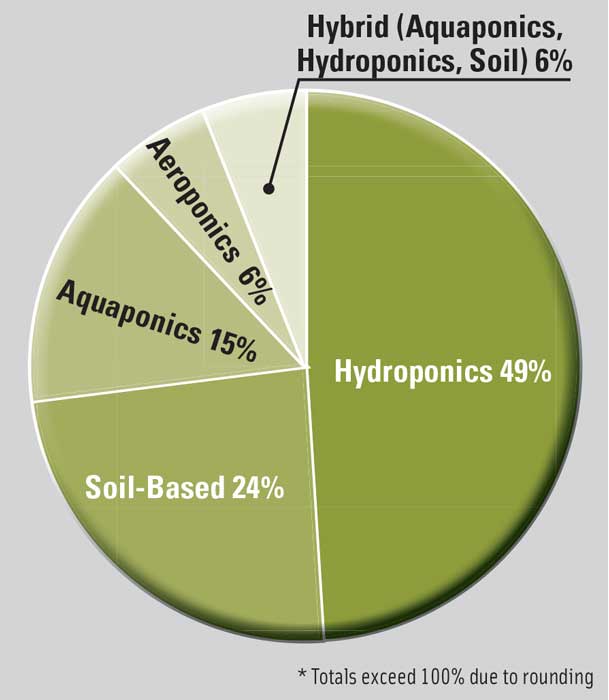

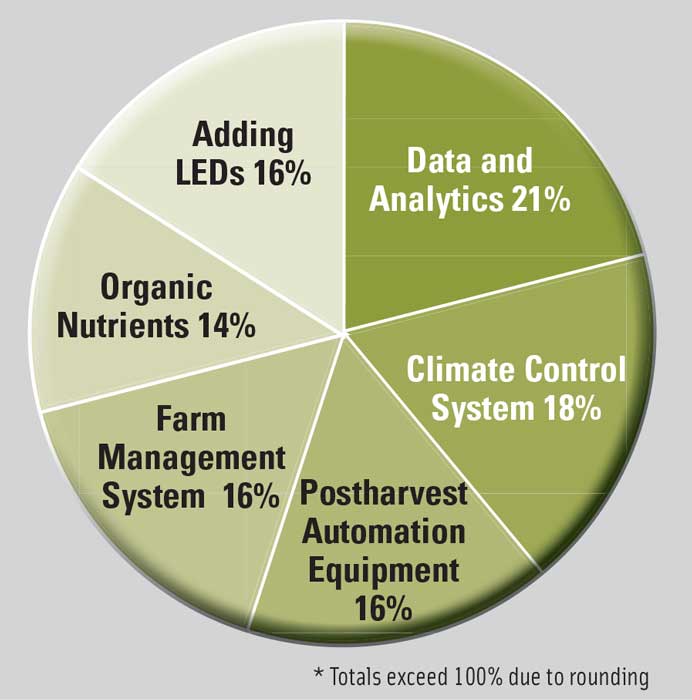
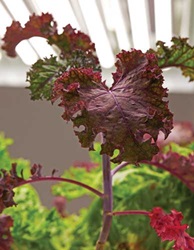
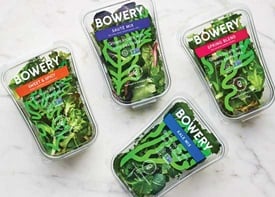 Greens from Bowery Farming, for example, prominently state on the package front that the produce is “grown locally with zero pesticides.” Gotham Greens, which operates urban rooftop greenhouses in N…
Greens from Bowery Farming, for example, prominently state on the package front that the produce is “grown locally with zero pesticides.” Gotham Greens, which operates urban rooftop greenhouses in N…